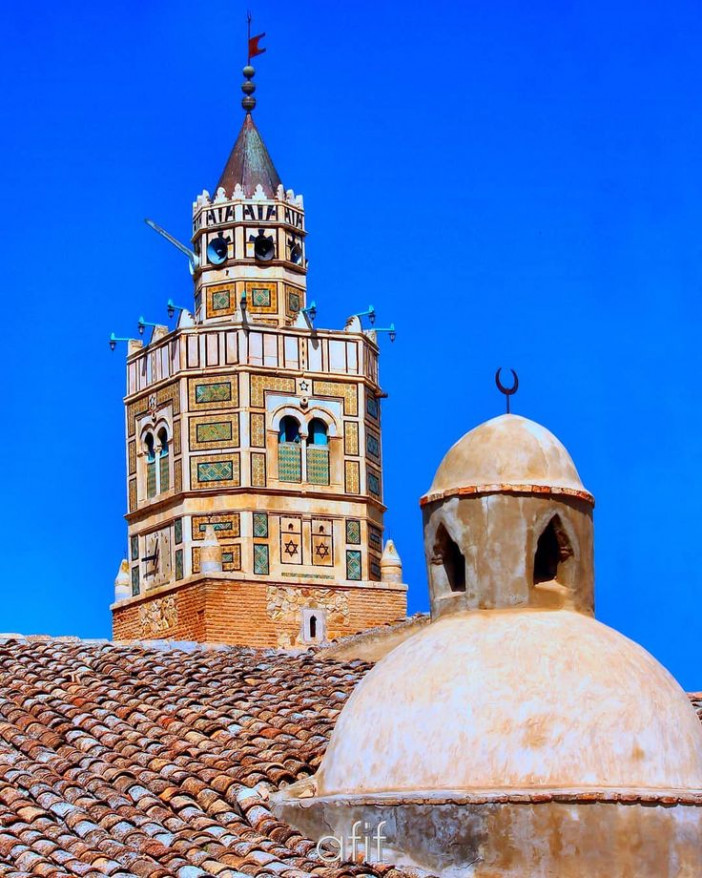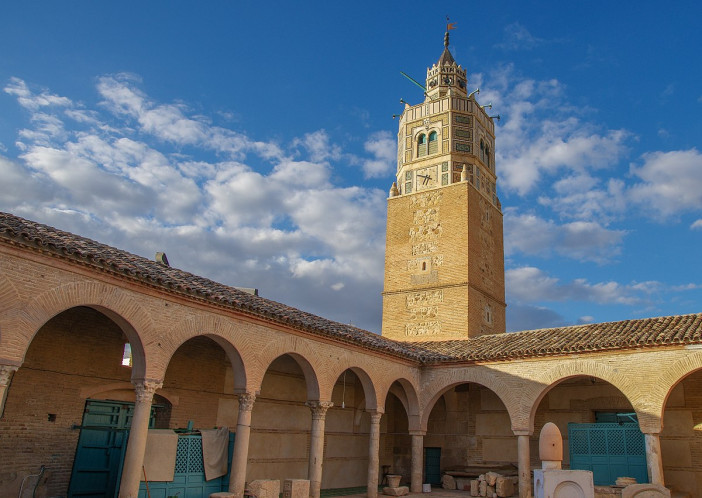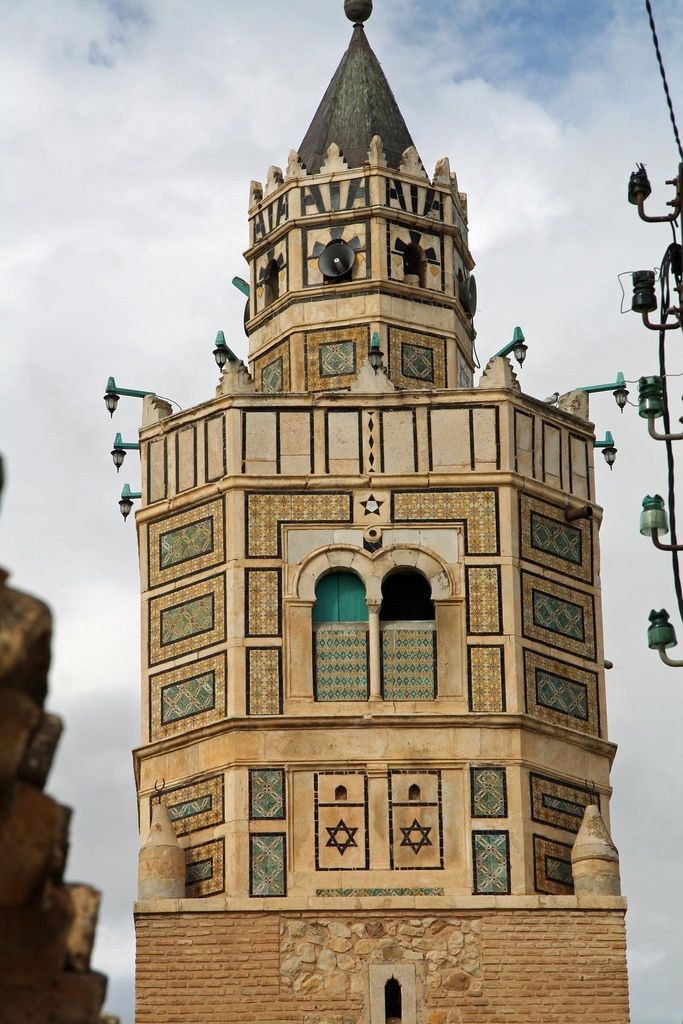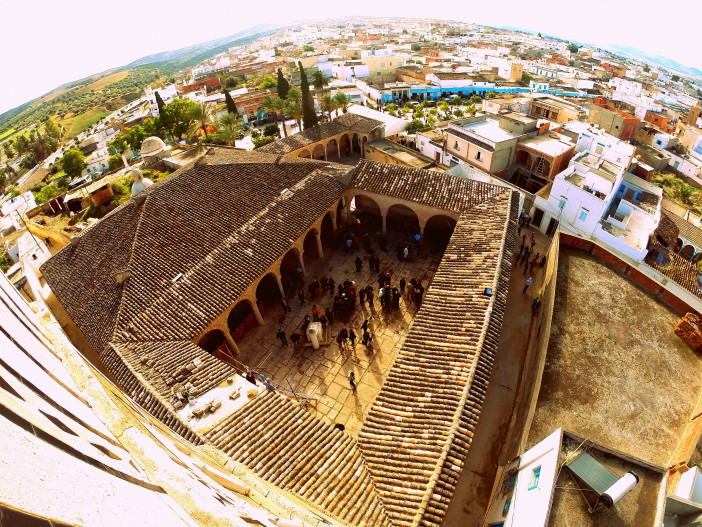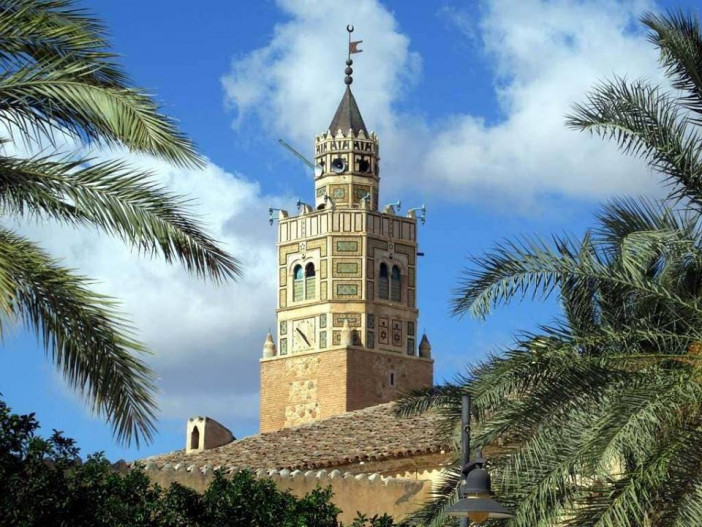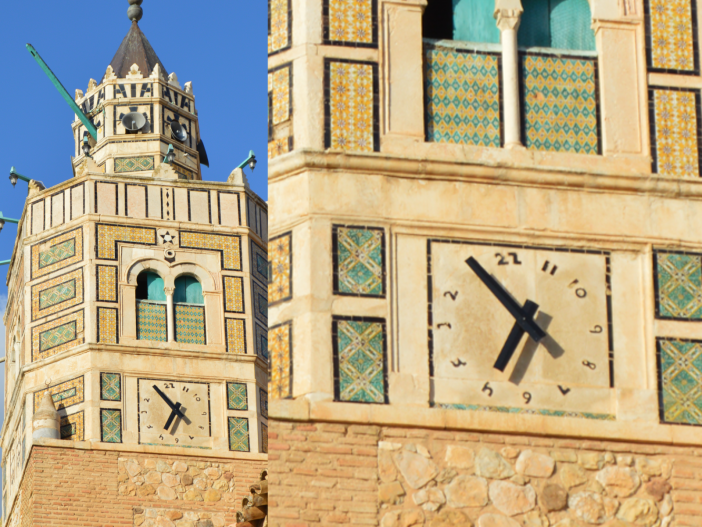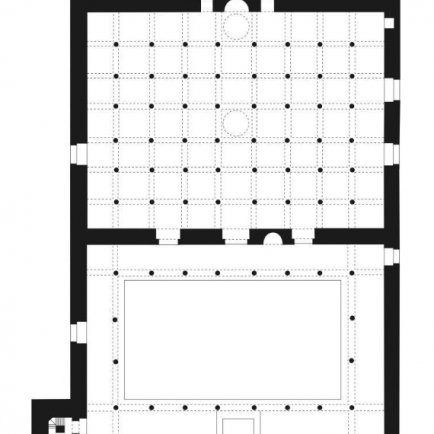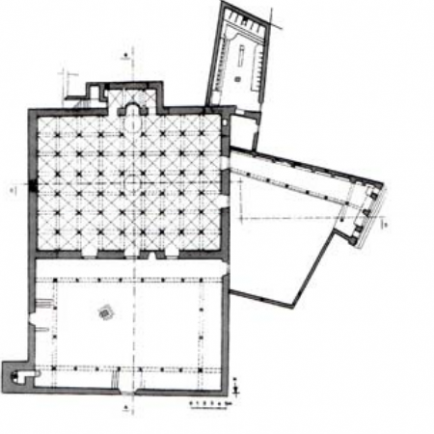The Great Mosque of Testour
History
The great mosque of Testour was built during the first third of the 17th century precisely in 1631. And that by Mohamed Tagharinou who was an immigrant of Andalusian origin who settled in Testour in 1609. This mosque was extended in the 18th century by the addition of a secondary courtyard and a room for ablutions.
Urban and Architectural
The mosque is located in the heart of the city of Testour . It is a rare synthesis of local Ifriqiyan traditions and Hispano-Moresque decorative and architectural techniques. The sober east of the structure shows the impact of Mudejar Art.
The courtyard :The roofs are covered in hollow tiles of reddish color. 4 galleries covered with tiles frame the courtyard. Three doors open under the South-East gallery give access to the prayer room. In this same gallery is a mihrab used by the faithful praying in the courtyard.
The minaret: Its minaret rises on the North-East facade and is made up of a 4.52m square tower crowned with octagonal towers decorated with chaining of bricks and rubble stones which recalls the church of del Cristo de la Luz and the Puerta del Sol in Toledo. It is enveloped in adornment decorated with a skylight illuminating the staircase, pinnacles, a cornice of twin bay windows, marble and earthenware panels, sawtooth merlons, a crowned pyramid an ear of corn with three strung balls and a croissant. On the south face of the minaret is a clock that runs backwards.
The prayer room : The prayer hall is also covered with a tiled roof. A cupola covers the space in front of the Mihrab. It is a hemispherical dome surmounted by a lantern, itself covered with a half-sphere.
The prayer hall measures 25m by 18.5m and has 9 naves and 7 bays. Ancient capitals were used to build the prayer hall. There are two cupolas: one preceding the mihrab and another located in the middle nave on the fourth bay starting from the courtyard.
Description
This mosque is located in the heart of the old city of Testour, a city in Northern Tunisia. The patron of this mosque is Muhammad Tagharinu, emigre of Andalusian origin who settled at Testour in AH 1018 (AD 1609).
References
http://zaherkammoun.com/2017/03/21/la-grande-mosquee-de-testour/
https://islamicart.museumwnf.org/database_item.php?id=monument;isl;tn;mon01;3;en
Details
Location
The Great Square, Testour, Governorate of Beja, Tunisia
Worshippers
500
Owners
The Tunisian Government
Year of Build
1631
Area
1600
Drawings
Map
History
The great mosque of Testour was built during the first third of the 17th century precisely in 1631. And that by Mohamed Tagharinou who was an immigrant of Andalusian origin who settled in Testour in 1609. This mosque was extended in the 18th century by the addition of a secondary courtyard and a room for ablutions.
Urban and Architectural
The mosque is located in the heart of the city of Testour . It is a rare synthesis of local Ifriqiyan traditions and Hispano-Moresque decorative and architectural techniques. The sober east of the structure shows the impact of Mudejar Art.
The courtyard :The roofs are covered in hollow tiles of reddish color. 4 galleries covered with tiles frame the courtyard. Three doors open under the South-East gallery give access to the prayer room. In this same gallery is a mihrab used by the faithful praying in the courtyard.
The minaret: Its minaret rises on the North-East facade and is made up of a 4.52m square tower crowned with octagonal towers decorated with chaining of bricks and rubble stones which recalls the church of del Cristo de la Luz and the Puerta del Sol in Toledo. It is enveloped in adornment decorated with a skylight illuminating the staircase, pinnacles, a cornice of twin bay windows, marble and earthenware panels, sawtooth merlons, a crowned pyramid an ear of corn with three strung balls and a croissant. On the south face of the minaret is a clock that runs backwards.
The prayer room : The prayer hall is also covered with a tiled roof. A cupola covers the space in front of the Mihrab. It is a hemispherical dome surmounted by a lantern, itself covered with a half-sphere.
The prayer hall measures 25m by 18.5m and has 9 naves and 7 bays. Ancient capitals were used to build the prayer hall. There are two cupolas: one preceding the mihrab and another located in the middle nave on the fourth bay starting from the courtyard.
Description


